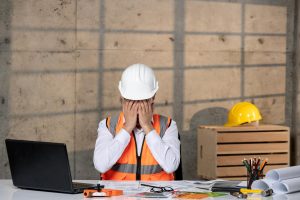When we hear the word failure, we have been conditioned to assume something negative. But when it comes to health and safety, are we doing more damage than good when we buy into failure’s bad reputation? Or we actually understand what failure means and the crucial aspects of failure that are required to teach us how to improve our health and safety systems?
In this post, we’ll explore what’s wrong with the way many organizations approach failure in health and safety today, offer suggestions on reframing failure and discuss the steps on how to learn from health and safety failures when they happen.
What’s wrong with our current approach to health and safety failures?
1. Most organizations have a narrow definition of health and safety failures
We often think that only incidents involving losses, such as property damage, injuries or deaths, qualify as failures. But in truth, many workplace failures are related to an organization’s health and safety management, procedures or overall culture.
For example, a workplace failure may include a lack of communication between management and employees, a near-miss report going unacknowledged or an employee performing a task without the proper PPE. Unfortunately, failures like these may be harder to spot.
When organizations don’t acknowledge these occurrences as failures, they miss the mark on understanding the potential adverse effects and learning moments that can come to fruition. These failures are allowed to exist and persist, potentially leading to further incidents.
2. Many of today’s organizations approach health and safety failures with negativity
When organizations only talk about failure in the same breath as a lack of success or serious injuries or deaths, they create a negative association with the word.
Some organizations even create a zero-tolerance policy when it comes to failure, telling employees that “failure is not an option.” Not only does this negative mindset create an adverse workplace, but it also discourages employees from reporting incidents and any health and safety event, as they are scared of getting in trouble.
When employees are afraid to report failures, the issues continue to present the same danger to other workers and may lead to further incidents. Ultimately, if organizations can’t learn from their failures, they won’t improve.
3. Organizations may place blame following a failure
When the blame cycle exists and persists in an organization, those who are blamed are often disciplined or lectured, resulting in weakened trust and reduced communication between employee and employer. As a result, management awareness of workplace risks, hazards and incidents suffers.
How can we change the way we approach health and safety failures?
1. Expand our understanding of health and safety failures
When we expand our understanding of health and safety failures, we fix two problems. First, we broaden our mindset of what a “failure” is, lessening the negative association that often comes with the word. Second, we learn to acknowledge broader systematic failures and proactively minimize adverse effects to acceptable levels.
2. Banish the blame cycle
Organizations should begin to understand that failures aren’t people driven, they’re process driven. Placing blame on those involved doesn’t decrease incidents. Instead, it increases employee turnover, reduces engagement and worsens performance (Harvard Business Review).
Instead of playing the blame game, organizations should:
- Take a look at the safeguards, controls and layers of protection involved in the failure
- Encourage employees to report near misses, incidents, good/bad observations, etc.
- Create a culture of open communication
- Make the corrective actions of past failures more visible to show the positive effects of incident reporting
3. Learn to fail safely
We are all human, and all humans make mistakes. Instead of creating a zero-tolerance policy when it comes to failure, organizations need to understand that failure is a reality in life, business and health and safety. You may not be able to control the risk, but you can put controls in place to create a resilient, recoverable working environment.
Organizations shouldn’t aim to eliminate failure or teach employees to fear failure but should instead build processes for mistakes to occur in the healthiest, safest manner possible. In other words, we must ensure we have controls in place to elevate our capacity to manage failures. This means understanding that if a failure does happen, we can ensure it has been reduced to an acceptable level. Organizations that fail safely expect and accept failures while working to reduce any negative outcomes that may result from them.
Build a resilient workplace by implementing the following controls
- Create event reviews that proactively looks at incidents for learning moments and preventative methods
- Conduct organizational learnings that teach elements of failures and how to fail safely
- Think differently about workplace incidents. This means don’t just determine CAPAs from incidents, but truly think outside-the-box and identify precursors or factors which led to the incident occurring
- Create an engaged workplace. The more engaged employees are, the more aware employers are of what’s occurring in the workplace
- Practice a human-centric mindset by putting workers first and empowering them to openly communicate
This article was originally published by Evotix – Langdon Dement






